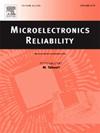Effect of Al content on microstructure and solder joint reliability of SAC305-2.0Sb-3.0Bi-0.1Ni solder alloys
IF 1.9
4区 工程技术
Q3 ENGINEERING, ELECTRICAL & ELECTRONIC
引用次数: 0
Abstract
Currently, most studies on solder alloy reliability focus on six-element systems, while research on seven-element solder alloy alloys, particularly concerning the influence of Al is limited. To address this gap, this study investigates the effect of Al microalloying on the mechanical and interfacial properties of a newly developed seven-element solder alloy. SAC305-2.0Sb-3.0Bi-0.1Ni was used as the base composition, and varying amounts of Al were added to form the SACSBN-xAl alloy system. Microstructural analysis and mechanical testing were conducted, including X-ray diffraction (XRD), scanning electron microscopy (SEM), and high-temperature aging, to evaluate hardness, tensile strength, and intermetallic compound (IMC) growth behavior. The results show that the addition of Al significantly refines the microstructure and promotes a more uniform phase distribution. Notably, at 0.2 wt% Al addition, the solder exhibited the highest hardness (22.133 HV) and tensile strength (67.575 MPa), indicating substantial performance enhancement. Furthermore, high-temperature aging tests revealed that the IMC growth coefficient at the solder/substrate interface reached a minimum of 0.0128, suggesting improved interfacial stability. These findings demonstrate that Al microalloying, particularly at 0.2 wt%, effectively enhances the reliability and mechanical performance of the solder joint.

Al含量对SAC305-2.0Sb-3.0Bi-0.1Ni钎料合金组织及焊点可靠性的影响
目前,对钎料合金可靠性的研究大多集中在六元体系上,而对七元钎料合金的研究,特别是对Al影响的研究较少。为了解决这一空白,本研究研究了Al微合金化对新开发的七元素焊料合金的力学和界面性能的影响。以SAC305-2.0Sb-3.0Bi-0.1Ni为基体,加入不同量的Al,形成SACSBN-xAl合金体系。采用x射线衍射(XRD)、扫描电镜(SEM)、高温时效等方法对材料进行显微组织分析和力学性能测试,评价材料的硬度、抗拉强度和金属间化合物(IMC)生长行为。结果表明,Al的加入显著细化了组织,使相分布更加均匀。值得注意的是,当Al添加量为0.2 wt%时,钎料的硬度最高(22.133 HV),抗拉强度最高(67.575 MPa),性能得到了显著提高。此外,高温时效试验表明,钎料/衬底界面处的IMC生长系数最小达到0.0128,表明界面稳定性得到改善。这些结果表明,Al微合金化,特别是在0.2 wt%时,有效地提高了焊点的可靠性和机械性能。
本文章由计算机程序翻译,如有差异,请以英文原文为准。
求助全文
约1分钟内获得全文
求助全文
来源期刊

Microelectronics Reliability
工程技术-工程:电子与电气
CiteScore
3.30
自引率
12.50%
发文量
342
审稿时长
68 days
期刊介绍:
Microelectronics Reliability, is dedicated to disseminating the latest research results and related information on the reliability of microelectronic devices, circuits and systems, from materials, process and manufacturing, to design, testing and operation. The coverage of the journal includes the following topics: measurement, understanding and analysis; evaluation and prediction; modelling and simulation; methodologies and mitigation. Papers which combine reliability with other important areas of microelectronics engineering, such as design, fabrication, integration, testing, and field operation will also be welcome, and practical papers reporting case studies in the field and specific application domains are particularly encouraged.
Most accepted papers will be published as Research Papers, describing significant advances and completed work. Papers reviewing important developing topics of general interest may be accepted for publication as Review Papers. Urgent communications of a more preliminary nature and short reports on completed practical work of current interest may be considered for publication as Research Notes. All contributions are subject to peer review by leading experts in the field.
 求助内容:
求助内容: 应助结果提醒方式:
应助结果提醒方式:


